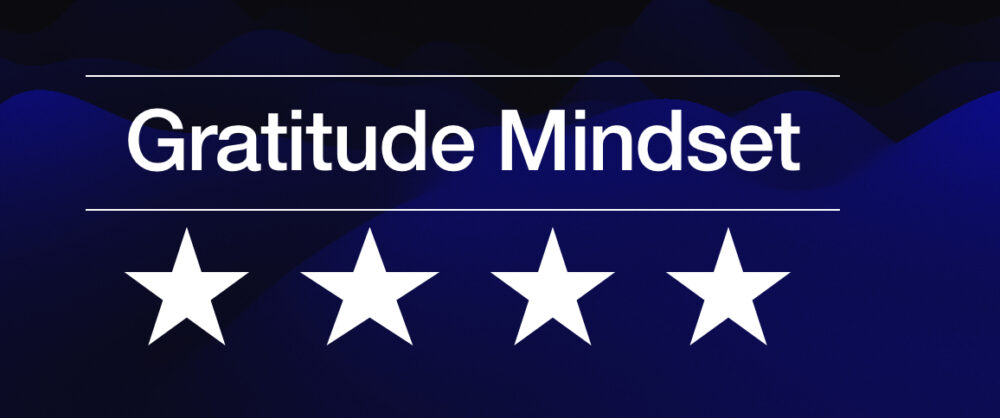7 HABITS OF A GRATEFUL ATHLETE by Brian Smith published by Athletes in Action
Studies show that people who practice gratitude are generally more happy, healthy, and optimistic about life.
Athlete who practice gratitude have better results during practice, coaching and in the arena of competition.
There are many reasons athletes specifically have to be grateful. Yet, it can be hard to practice gratitude in the midst of the daily grind of our sport. Our ability to be grateful often ebbs and flows with the circumstances in front of us.
Gratitude is like a muscle—it gets stronger if we consistently give it attention and push it beyond it’s level of comfort. Conversely, if we fail to exercise it consistently, our ability to be thankful atrophies.
Here are seven habits of thankful athletes, mental choices that athletes can incorporate into their daily lives to grow and maintain their gratitude “muscles.”
GRATEFUL ATHLETES TAKE TIME TO SOAK IN THE MOMENT
Before a practice or competition, they stop, take a deep breath, and make it a point to appreciate what they are about to engage in. Who else on this earth gets to play a game they love in front of fans who cheer them on in the process?
Is there pressure involved in that? Sure. But grateful athletes make it a habit to pause and enjoy, if only for a moment, the unique opportunity they get to experience.
GRATEFUL ATHLETES :
> TAKE TIME TO SOAK IN THE MOMENT
> RECOGNIZE PEOPLE WHO GO UNNOTICED
> FIGHT AGAINST ENTITLEMENT
> ARE COACHABLE
> LOOK FOR SILVER LININGS
> JOY IS NOT CONDITIONAL
> RECOGNIZE EXCELLENCE IN THEIR OPPONENT
GRATEFUL ATHLETES RECOGNIZE PEOPLE WHO GO UNNOTICED
They shake the hand the of maintenance worker who helps cut the grassy field that they are about to tear up with their cleats or the janitor who mops the floor so their feet won’t slide on the dust. They write their athletic trainer a thank you note for taping them up, helping them rehab, or stretching them out before practice. They give a hug to the die-hard fan that is at every game and cheers for his/her team regardless of the outcome.
GRATEFUL ATHLETES FIGHT AGAINST ENTITLEMENT
They recognize every blessing they receive as a gift they are not entitled to. Entitlement stands in direct opposition to gratitude.
Per diem money on a road trip. New shoes. New gear. Laundry being done on their behalf. Water or Gatorade received from a trainer. Tutors helping them pass their classes. Teachers giving them grace because of their travel schedule.
Grateful athletes fight against the “I deserve” mentality that is so pervasive in our culture by thanking the giver of these gifts and frequently checking the posture of their heart.
GRATEFUL ATHLETES ARE COACHABLE
They listen to advice and instruction from their coaches and, when appropriate, from their fellow teammates. They realize they do not have all of the answers. Even if they disagree with input that is given, it will not keep them from at least testing it out on the field. Grateful athletes have an appreciation of the authority they currently sit under and a desire to soak up any knowledge given to them.
GRATITUDE IS LIKE A MUSCLE—IT GETS STRONGER IF WE CONSISTENTLY GIVE IT ATTENTION AND PUSH IT BEYOND ITS LEVEL OF COMFORT.
GRATEFUL ATHLETES LOOK FOR SILVER LININGS
They understand that life is not always going to be rainbows and butterflies. There will be hardships in the form of injuries, losses, poor performance, and team conflict.
Grateful athletes do not pretend these circumstance do not exist or pretend they are not affected by them. They do, however, constantly ask themselves “What good can come of this or has already come of this?” in the midst of the struggle.
In difficult times, gratitude can be tough to grab onto. Grateful athletes make an effort to step back, look at the bigger picture, and cling to any silver lining they find.
GRATEFUL ATHLETE’S JOY IS NOT CONDITIONAL
They do not need a win or an epic personal best to be thankful. Gratitude for a grateful athlete is not birthed from good results, nor is it circumstantial.
They understand that lasting joy cannot be found in a game that delivers both the highest of highs and the lowest of lows. How do they set themselves on a trajectory of consistent gratitude?
They put their hope in the one who does not change. God. They read—no, devour His Word. They participate—no, are actively involved in a community of like-minded people to sharpen one another.
- They pray.
- They confess.
- At all costs they stay connected to the one who calls Himself “The Rock.”
GRATEFUL ATHLETES RECOGNIZE EXCELLENCE IN THEIR OPPONENT
They have an appreciation for their competitors. Have you ever noticed that rivals tend to bring their best to the table when they play? Grateful athletes practice gratitude towards a rival on two levels.
- One, they are thankful that their rival will ultimately bring out the best in their own performance.
- Two, because their joy is not dependent on winning, they are able to appreciate and look forward to the competition itself. Grateful athletes have a unique ability to want to beat their opponent while at the same time appreciating the intensity that is about to ensue.
References:
- https://athletesinaction.org/articles/7-habits-of-a-grateful-athlete/
- https://www.wsj.com/articles/SB10001424052748704243904575630541486290052
Like this:
Like Loading...

